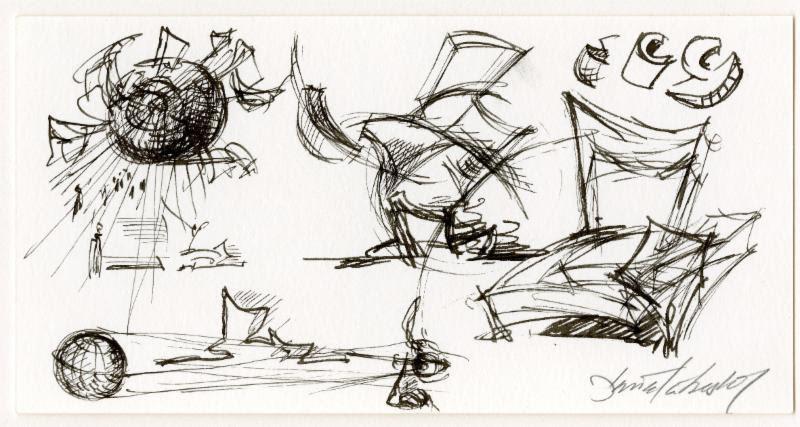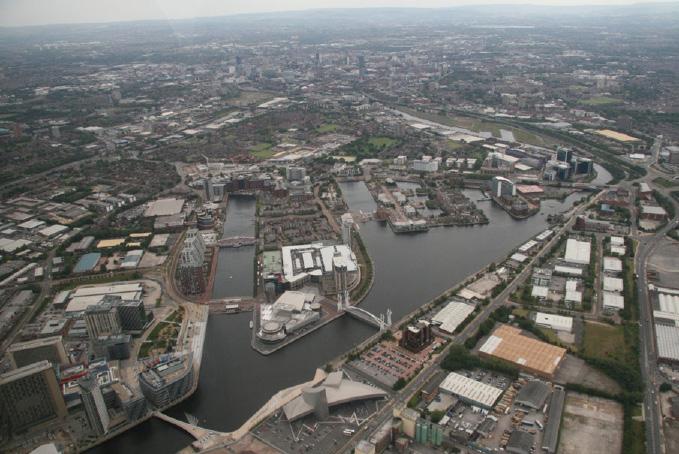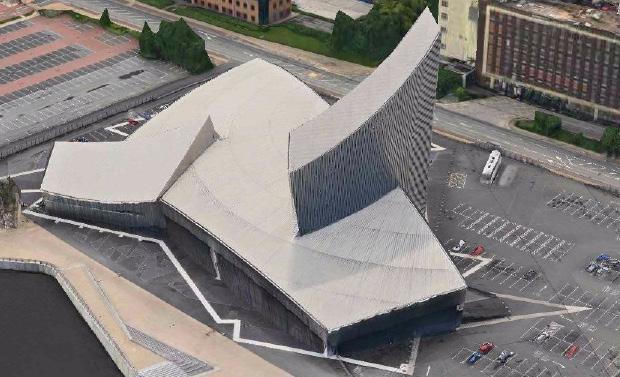
4 minute read
Critiques
from Iconic Architecture
by Amir1851
The critics of the Imperial War Museum North often comment on the exterior appearance of the structure with either praise or dissatisfaction for its simplicity and meaning. Jencks (2005) explains that Libeskind is ‘obviously trying to be iconic’ when referring to the concept of the shattered globes (p.38). Interestingly the use of the phrase ‘obviously trying’ implies that the Libeskind does have a drive to create icons similar to those done by Gehry although maybe not as successful. As rhetorical strength doesn’t always succeed, this leads to architects like Libeskind to focus too hard on
becoming iconic. The concept becomes too obvious and lackluster.
Advertisement
Figure 15. Concept sketches of Imperial War Musuem, by Libeskind.
On the other hand, critic Jones (2005) praises and often compares it to Lowry, claiming it to be more successful because of its simplicity. He explains “it is more coherent as an object despite its dynamic plan; yet its curves and diagonals differentiate it dramatically from the horizontal and vertical backdrop of ordinary buildings” (N.p). This infers that because of the placement of the building it stands out whilst also being unique and complementary to the surroundings. In this way Libeskind creates a building that is iconic because of its ability to differentiate itself and stand out all while not clashing with the natural city landscape. In addition, Jones (2003) uses the metaphor describing the Lowry and Imperial War Museum North as the two cultural cherries on cake, similarly Hedgecoe & Whittle (2012) quoted a tourist visiting the area of Bilbao for the Guggenheim Museum and they used the same metaphor of cherry on cake when describing the museum. This also shows that both museums were revived positively because they improved the area culturally and were internationally recognised.
The role of the Imperial War Museum North being a key point in Salford Quays regeneration is also brought up again, whether Libeskind was able to achieve the desired effect of socio-economic prosperity by opening the museum similar to Bilbao. Critics argue if the construction of the Imperial War Museum North was done to increase consumption in the area of goods, help educate or simply as a way to draw attention to the city (Shaw, Scholes, & Thurgood. 2008). According to some articles, they believe the IRA bombings was “one of the best things to happen to Manchester” because they allowed for some of the architecture they believed to be unappealing be destroyed and allowed for the creation of new, modern buildings to be built such as the Imperial War Musuem North (Creative Review, 2002). This suggests that the Imperial War Museum North and other newer buildings helped transform Manchester and Salfords landscape and helped regenerate new and improved place branding and image. In addition, the article “Libeskind’s Skill” writer Powers (2002) comments that the creation of the Imperial War Museum North as being a “carefully contrived product of culture” (N.p). This further proves that the museum’s creation was used to help boost the area as being culturally rich for having an icon designed by a famous architect, similar to how Gehry was able to remake and transform the area of Bilbao.

Libeskind’s ability to create architecture with tragic meanings and site contexts is something critics either praise or criticize. The Imperial War Museum North was criticised by Glendinning (2010) for its inability to relate to the site on which the museum is built upon, he states “The incongruous context for this profundity is the theme-park-like landscape of a canal side.” (p.104). The description of the site for the Imperial War Museum North as ‘theme-park-like’ seems to criticise the structure for being out of place. Interestingly, the juxtaposition of theme parks being places used for fun and entertainment whilst descriptions used to describe emotions felt around visiting a war museum are very contrasting, making the museum feel trivial and insignificant. Further, Glendinning (2010) quotes journalist Jonathan Meades criticising the use of sloping floors and walls which Libeskind had purposefully done to simulate war by just denying the effectiveness of this tactic. Therefore, Libeskind’s use of the site, concepts and meanings for his designs do not align to some critics’ views as they see them employed ineffectively. However, others critics such as Jones (2003) describe the appearance of the Imperial War Museum North as being extremely extroverted and claims that designing museum buildings have now become playgrounds for architects. This description makes the museum seem loud and having a presence whilst Glendinning (2003) was opposed to this idea. As well as this, the ‘playground’ metaphor suggests museum buildings now allow for more freedom for architects and allow them to be as creative as they like without restrictions. Therefore, praising Libeskind’s creativity and ideas for an impactful war museum design.
Figure 17. Apple map view on Imperial War Museum North, Apple.







